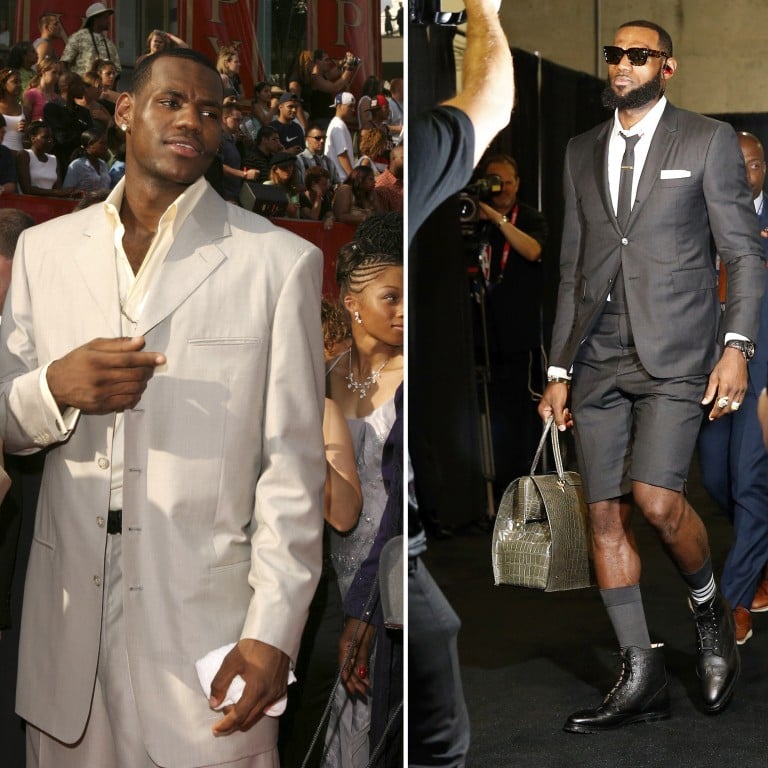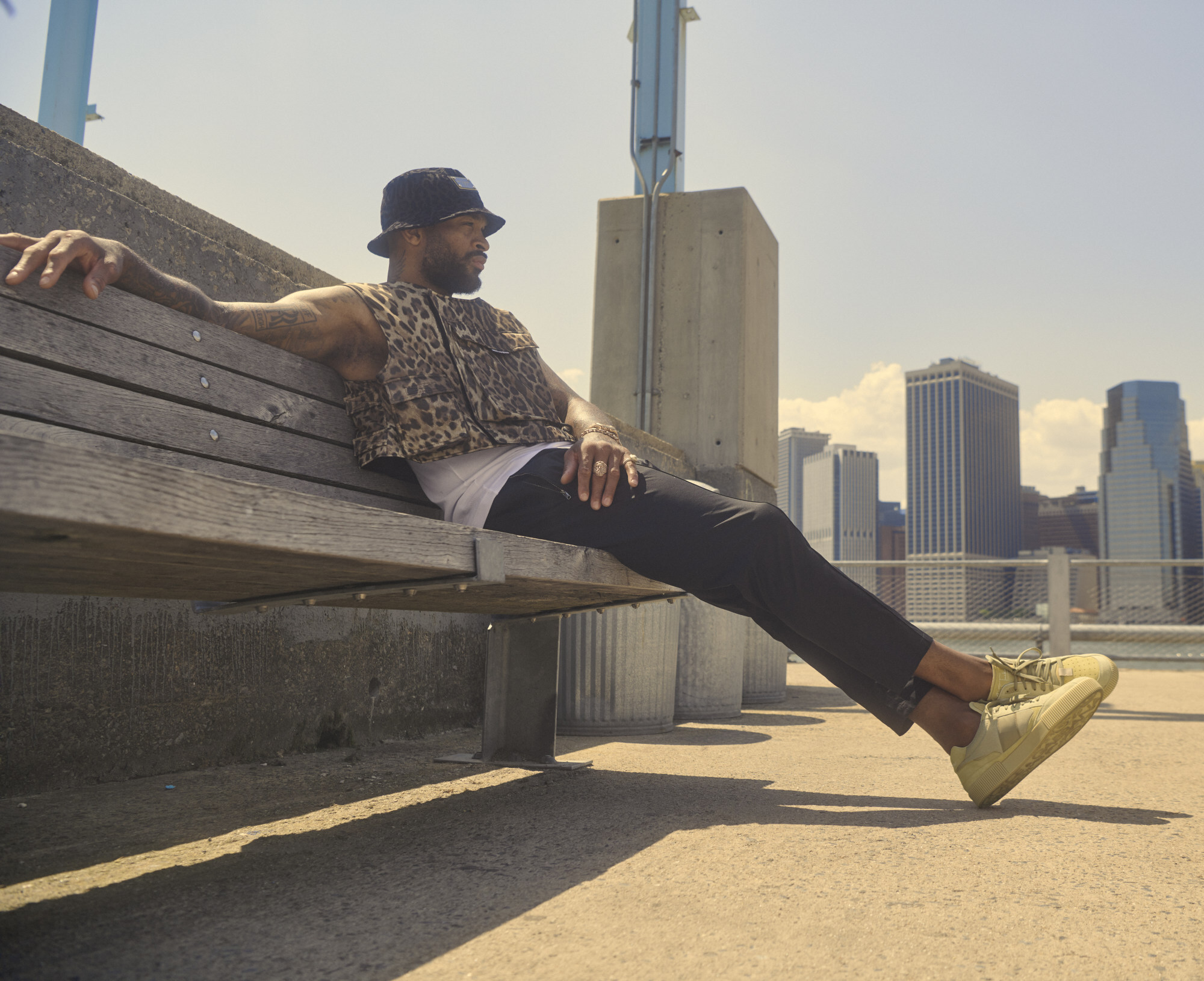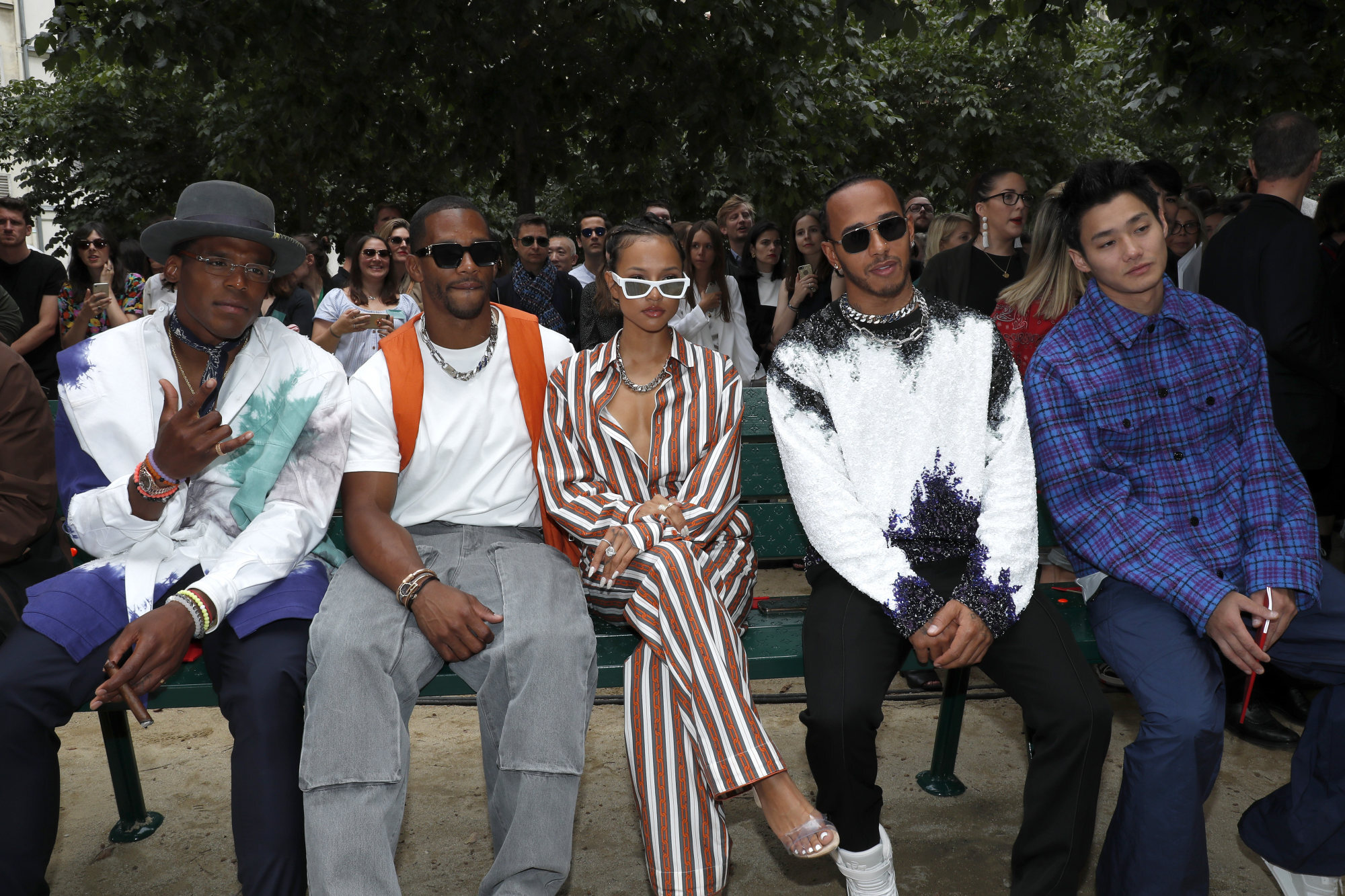
From LeBron James on 2003 NBA draft night to David Beckham and Lewis Hamilton, how athletes’ fashion influence evolved with social media
- We’re used to seeing athletes on social media dressed in high fashion or leisurewear, but it wasn’t always that way
- The 2003 NBA draft was famous for terrible, ill-fitting suits but these days athletes are likely to be fronting luxury brands, if not collaborating with them
The 2003 National Basketball Association (NBA) draft is widely considered to have had the most talented collection of college and high-school players ever to enter the world’s top professional basketball league. Four future hall-of-fame players were selected in the top five picks that night: Chris Bosh, Dwyane Wade, Carmelo Anthony and the No 1 pick, LeBron James, the 18-year-old phenomenon from Akron, Ohio.
At the end of the evening, as the NBA does with every draft class, a group photo was taken, and that snap captured a moment in sporting history that has also become notorious in fashion history. Despite the immense height and size of James, Wade and company, the striking thing was how baggy and ill-fitting their suits were.
The six-foot-11 (2.1 metre) Bosh wore a taupe suit with a lab coat for a jacket. Wade chose to go conservative with a navy suit that still appeared far too big and which he later admitted made him look like a preacher. Anthony’s grey suit had a collar with no lapels and six jacket buttons reaching nearly to the knot of his tie. And James, the man who continues to dominate the NBA to this day, wore an all-white, all-baggy number to denote his messiah status.
As much as the 2003 draft class is revered for its talent and success on the court, it is routinely roasted for its sartorial choices on the night. “We got enough fabric on these suits to clothe the entire country,” said Wade last year. “It’s funny when I look back at it and I thought I was, like, doing the right thing.”

Fast-forward to the first game of the 2018 NBA Finals. On his walk to the locker rooms, James stole the headlines again in both the sports and fashion press. The NBA’s most famous player sported an US$87,000 outfit: a custom-made Thom Browne suit with shorts instead of trousers, Thom Browne leather wingtip boots and alligator-skin bag, Jacques Marie Mage sunglasses and an Audemars Piguet watch.
As an indication of how much things have changed in the NBA, the walk to the locker room has itself become a de facto catwalk show. The social media account @leaguefits, with just under 750,000 followers on Instagram, posts the most fashionable game-day “fits”, and it has become an open secret that stars direct-message the account, sometimes during the game, in an attempt to make the cut.
The next Lacoste? 7 tennis stars serving up ace fashion lines
This is being repeated in the United States’ National Football League, the English Premier League, Formula One racing and with any pro athlete with a sizeable social media following. Today, pro athletes are as likely to appear front row at fashion shows as musicians and actors, and just as likely to be courted by luxury brands desperate to dress them.
A factor pushing athletes to fashion-influencer status has been the shift in the way we dress – and the rise of athleisure. This hybrid clothing that can be worn at the gym or on social occasions “has been a strong trend throughout the past years”, says Chris Kyvetos, menswear buying director at online luxury retailer Mytheresa.
“It stands to reason that athletes would be a great way to represent the trend and that’s why they are now considered fashion icons.”
Traditional sports brands such as Nike, Adidas and Puma have been elevated to high fashion, and collaborations have often leveraged the visibility of pro athletes. Puma’s coup in signing Brazilian footballer and former Nike star Neymar Jnr has led to the brand pushing out a rash of signature clothing collections for all occasions, ranging from affordable to premium in price.

Luxury brands are producing sports-led collections even when the link is tenuous at best. “You have fashion brands creating products for almost every sport nowadays,” says Arby Li, vice-president of content strategy at streetwear fashion site Hypebeast, “Off-White for running, Undercover for basketball, Louis Vuitton for skateboarding, Matthew Williams for Nike training gear.”
Li feels that links between athletes and fashion are nothing new but the environment has changed due to the internet. “Athletes have always been used as marketing assets for fashion brands, but we’ve just seen an increase in focus on what they’re wearing probably due to social media.”
Li points to the example of David Beckham, who, in the early 2000s, was an early and hugely successful crossover fashion-sports star, and suggests that social media has “levelled the field” for athletes to be just as influential as music and film personalities. “[Sports stars] have always been part of the fashion establishment,” Li says, “we’re just seeing it more nowadays.”

Formula One motor-racing champion Lewis Hamilton has taken full advantage of his status to shill product, and even middling talents such as P.J. Tucker and Kyle Kuzma in the NBA, or Manchester United’s Paul Pogba have perhaps become better known for fashion than their sporting prowess.
In the case of Tucker, the NBA’s “sneaker king”, his reported 5,000-pair collection has led to fashion-specific deals with eBay and a special collection with Nike. Just this month he was in Venice promoting his new sneaker collaboration with Dolce & Gabbana.
Kyvetos says this is a smart approach. “Sneaker brands created by athletes are likely to be successful long term,” he says, “but ready-to-wear is probably a bit more difficult. Luxury ready-to-wear in particular is a difficult space, even for influential creatives and artists.”

To avoid the pitfalls of production and to push more fashion-forward collections, plenty of stars have linked up with smaller, independent labels.
“We have seen a few collections that are successful and sell out,” says Charlotte Browning, fashion strategist at trend forecasting company WGSN, pointing to NBA star Serge Ibaka’s capsule collection with Canadian outerwear brand Nobis, as well as basketball player Russell Westbrook’s collaboration with now-defunct high-end retailer Barneys.
“Athletes have seen successful launches using their immersive social media following to their advantage. They are able to get direct feedback from their followers, who are most likely to be their primary customer,” says Browning.

James’ journey, though, is the lodestar for the elite athlete becoming a fashion icon. If there is one person responsible for his transformation it is former stylist Rachel Johnson, who has also styled the likes of Victor Cruz, Cam Newton, Amar’e Stoudemire and now works with former NFL quarterback Colin Kaepernick.
It is perhaps more accurate to consider Johnson as a change-maker rather than a stylist. Introduced to James via rapper Jay-Z, Johnson felt the basketball player needed a deeper connection with fashion that could only come from fashion houses nurturing a better understanding of athletes.
“I knew that in order for LeBron to be respected from a style standpoint, that he needed to be wearing recognisable, historic brands,” Johnson told Business Insider. “Coming from a fashion standpoint where they just didn’t understand men of this stature, they didn’t necessarily understand the athletic world, I had to bring these two worlds together in a way that both of them could understand each other’s language.”

When she started working with athletes, Johnson would have to fly her clients to France and Italy to have them measured in person, as the tailors in the studios could not conceive the measurements they were being sent from the US.
Johnson pushed her athletes to embrace the drama and Cruz, a former player for the NFL’s New York Giants, was among the first to regularly appear runway-side and became the face of Givenchy in 2015. A far cry from draft night in 2003, when four future global stars made such an unfortunate first impression.
These days, beholden to social media and the commercial opportunities it can bring, athletes are striving ever harder to be seen as fashionable, which creates a whole new kind of sartorial issue.
“Ironically, as everyone focuses on looking unique,” says Li, “everyone ends up wearing similar brands most of the time.”











